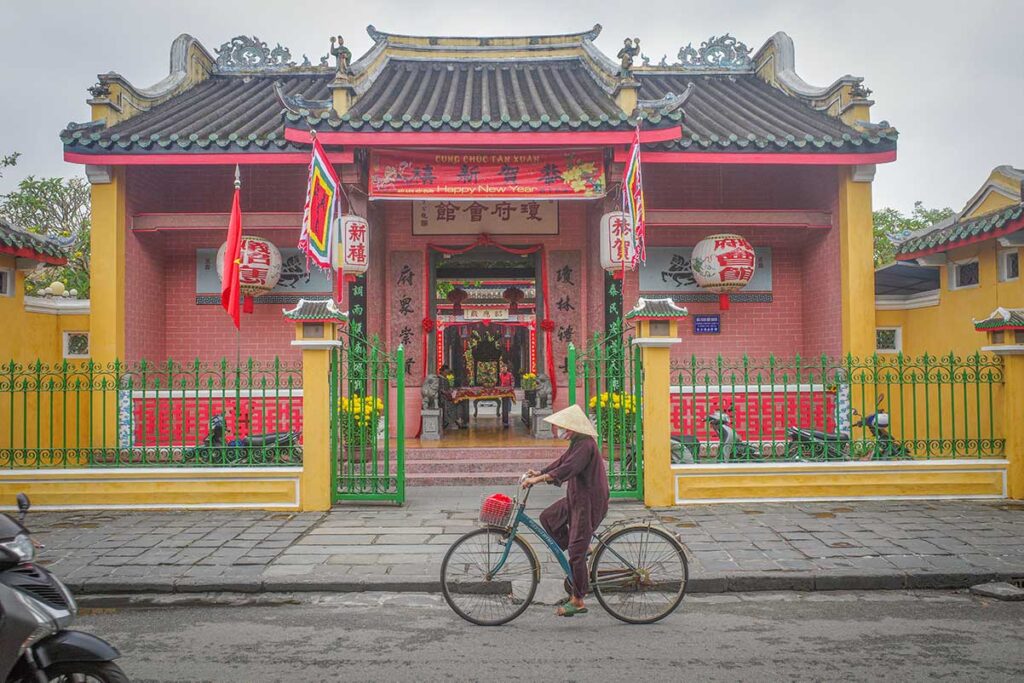What is Hai Nam Assembly Hall?
In Hoi An, assembly halls were built by Chinese merchant communities as both places of worship and cultural gathering. These halls honored regional deities, ancestors, and served as social hubs for trade, education, and festivals.
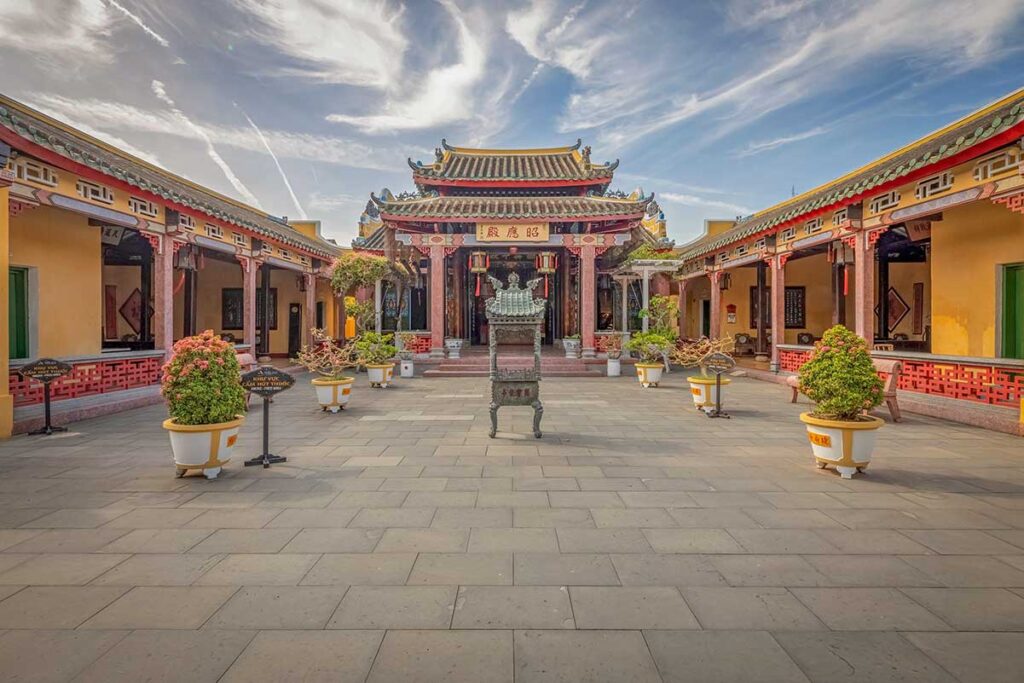
Hai Nam Assembly Hall was founded by the Hainanese community, a group of seafaring traders from Hainan Island, China. Compared to the larger and more ornate Fujian and Cantonese halls, Hai Nam is more modest but deeply symbolic. While other halls honor gods like Mazu or Quan Cong, this one uniquely commemorates 108 Hainanese merchants who were tragically killed and later deified. Alongside the shared Ngũ Bang Hall and the artistic Trieu Chau (Chaozhou) Hall, it adds another layer to Hoi An’s rich Chinese-Vietnamese heritage.
Hoi An Walking Tour by Local Guide
- Experience Explore Hoi An’s Ancient Town with an expert local guide and insider stories.
- Includes Market visit, traditional house, colorful temples, and coffee break by electric car.
History of Hai Nam Assembly Hall
The history of Hai Nam Assembly Hall is rooted in a tragic event from 1851, when a ship carrying 109 Hainanese merchants was mistakenly attacked near Hoi An. Accused of being pirates, 108 were executed, with only one survivor who later revealed the truth. The injustice shocked the Hainanese community and eventually reached Emperor Tu Duc. In 1875, under pressure and remorse, the emperor issued a royal decree to honor the victims, granting them divine status as martyrs and funding the construction of a memorial.
Construction of the assembly hall began in 1883 and was completed in 1891. Unlike the other halls in Hoi An, which were funded by local communities, Hai Nam Hall was financed by the imperial court — a rare gesture that marked the significance of the event.
The 108 merchants, now worshipped as protective spirits, are still the spiritual focus of the hall. Over the years, the building underwent several renovations, most notably in 1931. Though long overlooked by tourists, it was officially opened to visitors in 2016 and is now recognized as one of Hoi An’s most meaningful cultural sites.
Highlights & Architecture
Hai Nam Assembly Hall may not have the grandeur of some other halls in Hoi An, but it impresses with its balance, elegance, and layered layout. Built in traditional Chinese architectural style, it follows a symmetrical design centered around a front gate, courtyard, and main hall, with side structures on either side. From the street, it appears modest, but inside, the details and atmosphere offer a calm and meaningful experience.
1. The Gate & Front Hall
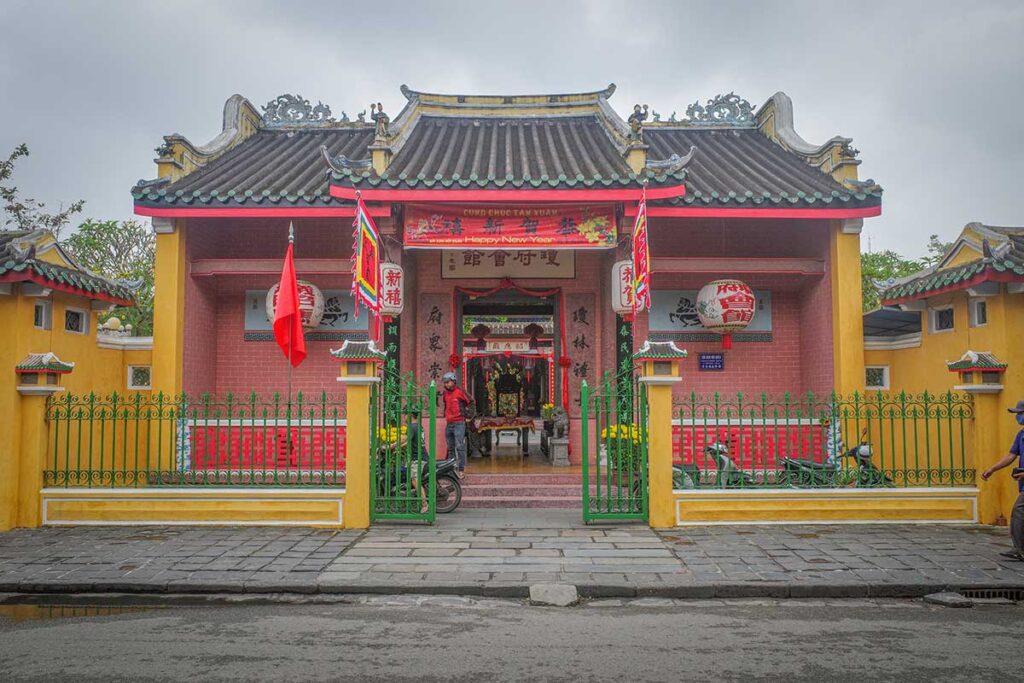
The entrance has a simple yellow facade that blends in with the rest of the Ancient Town. It’s easy to overlook, but once you step through the gate, you enter a quiet, structured space. The front hall serves as a transitional area from the busy street into the sacred interior.
2. Open Courtyard & Garden
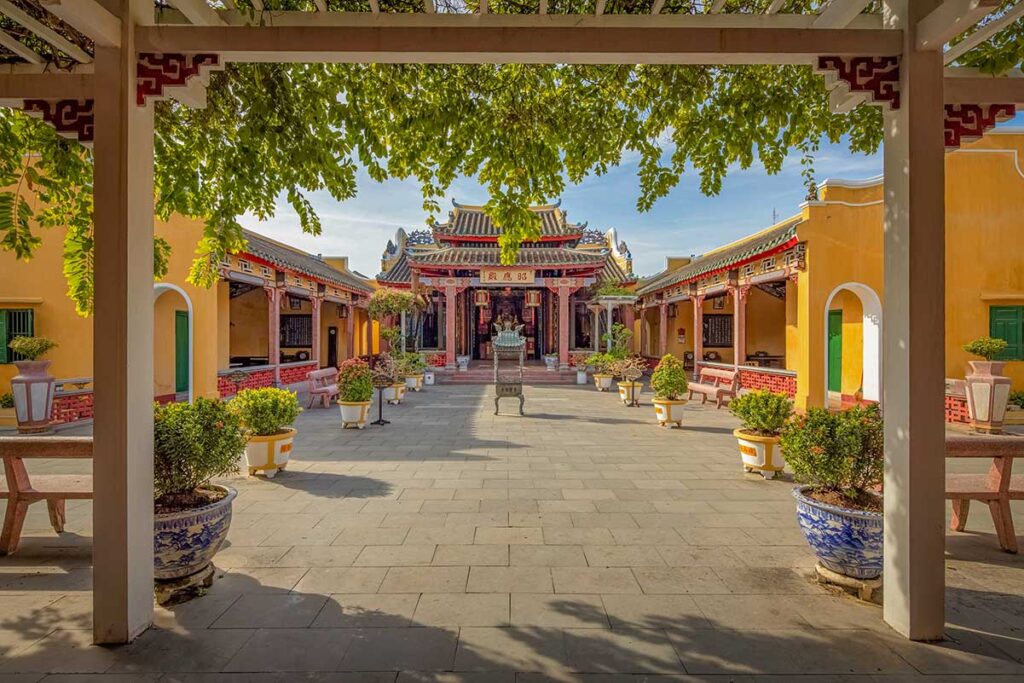
Past the front hall is a peaceful courtyard with potted plants and a clear walking path leading to the main shrine. It’s one of the most serene courtyards among Hoi An’s assembly halls and is especially well maintained. The natural light, greenery, and open space offer a moment of quiet before entering the worship hall.
3. Main Worship Hall
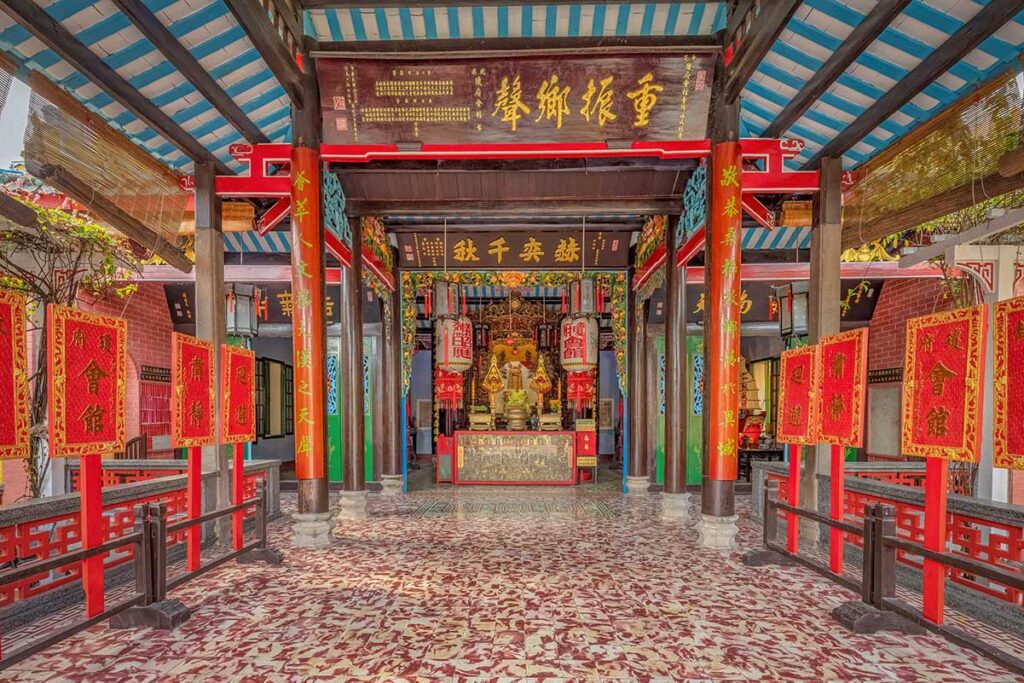
The main hall houses spirit tablets, not statues — a contrast to other halls in town. The central shrine honors the 108 Hainanese merchants who were wrongfully executed and later deified. Their presence defines the spiritual focus of the hall and gives it a unique sense of reverence.
4. Side halls & Ancestral altars


On each side of the main structure are East and West wings once used for meetings and gatherings. Today, they include ancestral altars, along with a shrine to the God of Wealth — a popular figure in merchant communities. These side rooms add cultural depth and show how the hall also served community functions.
5. Worship pavilion & Roof details
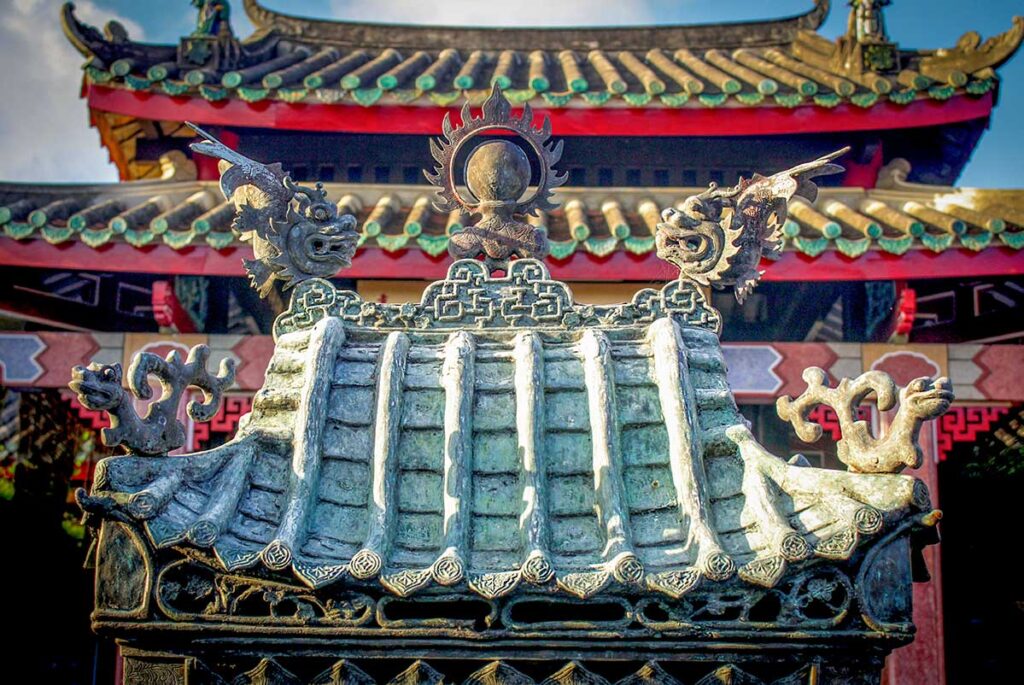
In front of the main hall is a pavilion-style structure known as the “bai đình.” Its slightly higher roof and open design create visual contrast and balance. The layered rooflines — gradually rising from front to back — follow feng shui principles and give the hall its distinct silhouette.
6. Carvings, Calligraphy & Feng Shui
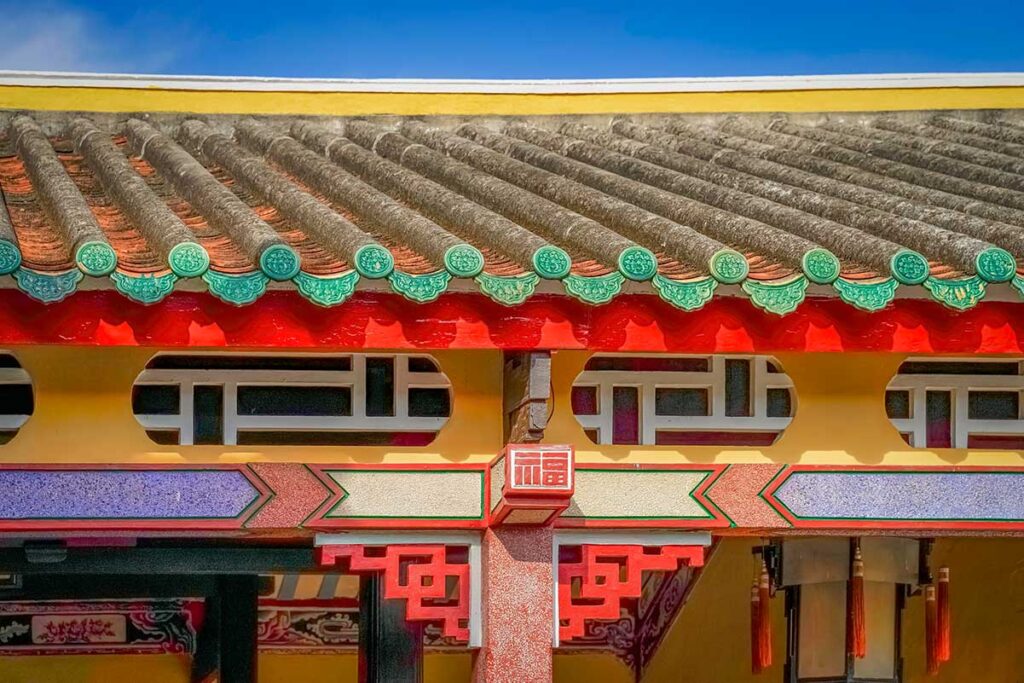
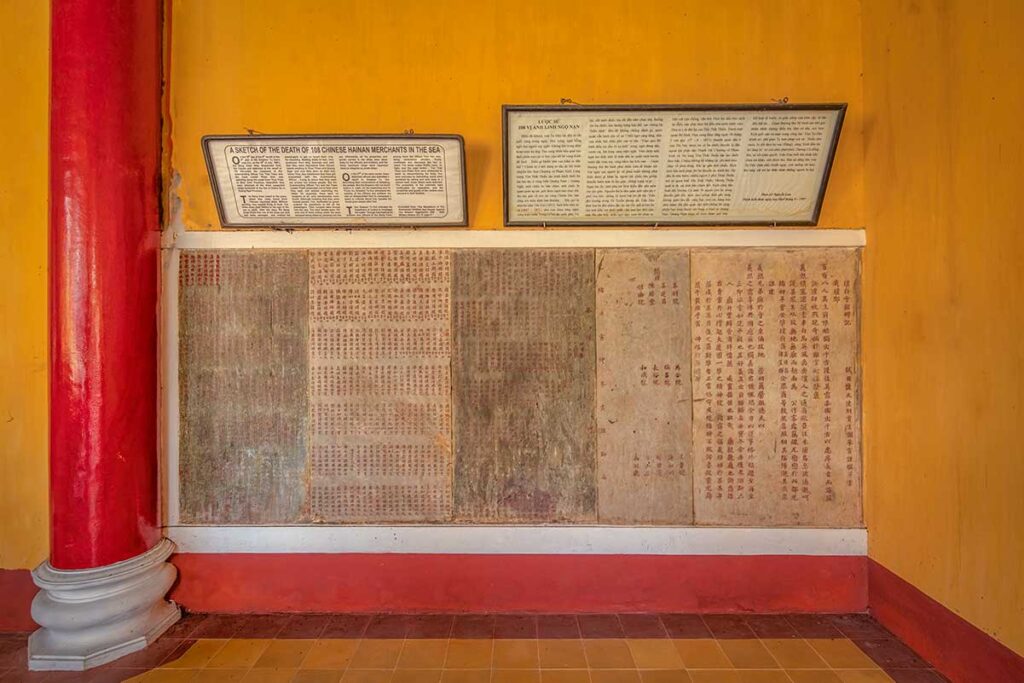
While less ornate than some halls, the Hai Nam Assembly Hall features refined wood carvings, Chinese calligraphy panels, and harmonious feng shui layout. The visual symmetry and subtle detailing reflect the quiet dignity of the space — more spiritual than showy.
Location & visiting info
Opening Hours
Hai Nam Assembly Hall is generally open daily from 8:00 AM to 5:00 PM. Hours may vary slightly during festivals or public holidays, so check locally if you’re visiting around those times.
Entrance Ticket
Entry is included in the Hoi An Ancient Town ticket, which costs 120,000 VND. This ticket gives access to 5 sites, typically including assembly halls, temples, and museums. Hai Nam Hall counts as one of the flexible choices.
Location
You’ll find the hall at 10 Tran Phu Street, right in the heart of the Ancient Town. It’s a short walk from other main attractions like the Japanese Bridge and the Fujian Assembly Hall.
Getting there
The best way to visit is on foot as part of a walking route along Tran Phu Street. The street runs west to east through the Ancient Town, making it easy to include Hai Nam Hall in a logical sequence with the other assembly halls.
Other Assembly Halls in Hoi An
Hoi An Ancient Town is home to five historic Chinese assembly halls, each built by different regional communities. Visiting more than one gives you a broader picture of Hoi An’s multicultural roots and the role Chinese merchants played in its development. Here’s a quick overview of the others:
- Fujian Assembly Hall (Phuc Kien) – The largest and most popular, known for its ornate gate, dragon statues, and shrine to the sea goddess Mazu.
- Cantonese Assembly Hall (Quang Dong) – Located near the Japanese Bridge, this hall features striking wood carvings and is dedicated to Guan Yu.
- Trieu Chau Assembly Hall (Teochew) – A quieter hall near the market, with intricate woodwork and colorful glass decorations.
- Trung Hoa Assembly Hall (Ngu Bang) – The only one representing multiple Chinese communities, still used as a cultural center and language school today.
